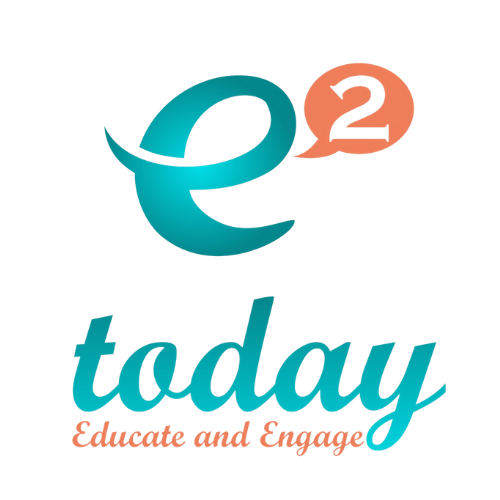Web Filtering Checklist
 When schools make web filtering and blocking decisions, they need to be sure that they are not also blocking learning, blocking productivity, blocking progress. Shifts have occurred widely over the last couple of years in schools regarding the filtering question. Security still remains a top priority. However, the question of what content to block and not block is one where the winds of change are continually blowing.
When schools make web filtering and blocking decisions, they need to be sure that they are not also blocking learning, blocking productivity, blocking progress. Shifts have occurred widely over the last couple of years in schools regarding the filtering question. Security still remains a top priority. However, the question of what content to block and not block is one where the winds of change are continually blowing.
Fighting the tide
Take the story of new dunes installed at a beach. I remember when new dunes were added at a beach near my home. They were tall and mighty. Surely they would serve their purpose. Two months and one very big storm later, something happened. The dunes were washed away to a great extend. Two full blocks worth were gone. The powerful ocean overtook them.I think in many ways this is what is happening with filters and web content. Though many schools and organizations block and carefully keep the web at bay, web technology and its ever changing nature continues to command attention. Nature takes it's course. People find new ways to access web content. Students use proxy sites or their smartphone. Teachers become frustrated in their attempts to access content. Valuable time can be spent working on solutions.The topic of filtering is an important one. The web offers more and more educational content. Having a proactive and collaborative strategy is essential when making decisions on filtering today. It will equip our students better in the long run.
Natural Shifts
Blocking was once a simple issue. Block inappropriate content such as hate sites, chat sites, instant messaging functions, inappropriate images and more and you were all set. Then came the proliferation of web 2.0 sites, the growth of collaborative technologies and impact of social tools.What were once easy decisions have become sticky ones. What was once black and white has become many shades of gray like the changing tides of the ocean. What should schools consider? View this checklist for evaluating your strategy.
Checklist for Evaluating Filtering Strategies
- Look at laws and government guidelines to be followed - Consider CIPA. Often their requirements are misconstrued to be more strict that they actually are.
- Look at district and local rules - Are there standards that our district has put forth? What prior policies exist?
- Look at security concerns - Consider viruses, malware, bandwidth, access and more. What priorities exist?
- Look at existing feedback - What do admins, teachers and students report about the filter? Does it meet educational needs?
- Look at the existing filter - Is it flexible? Does it allow for multiple filtering levels for administrators, teachers and students? If not, when can we upgrade to add more functionality?
- Look at current processes - How easily can teachers and students get access to sites for educational use?
- Look at your decision making team - Who determines which sites are blocked? CIOs and IT are needed. Educational leaders and teachers should also be involved in this decision making.
- Look at current educational initiatives - Are current initiatives requiring expanded access. If so, are the best web communication and collaboration tools available for this purpose?
- Consider Options that are Win/Win - Is a walled garden approach an approach that might work for your school? With sites such as this, social and collaborative technologies coexist with more tightened security.
- Look at the Policies in place - How often does your school or district evaluate your approach to filtering? The web evolves daily as do educational means for using web content.
- Look at Digital Literacy supports - Are you teaching all parties how to use the web safely and appropriately? Education is essential. Given appropriate education in place, we are equipping educators and students with the decision making skills that will serve them long after they have left us.
Mock on, mock on,'tis all in vain! You throw the sand against the wind, And the wind blows it back again. Voltaire Rousseau
Filter Fitness Guidelines
- Know the rules. Don't interpret them so that your implementation is more strict that the law
- Upgrade your filter and build in flexibility
- Involve Educators
- Focus on educational purpose
- Be aware of the changing landscape
- Educate your community as to your approach
- Balance network security needs with educational needs
- Go for win win. Work to benefit all parties involved.
- Reassess often
- Make Digital literacy and citizenship education a priority
Given the wide range of content out there which has sound educational value, this can no longer be strictly an IT level decision. Schools and organizations can't continue to block strictly and expect to reap the benefits of today's web. If we want to providethe most relevant education for the 21st Century, we need to have a filtering strategy that is informed and flexible.This is cross posted on School CIO http://www.schoolcio.com/
Related Resources
CIPA - Children's Internet Protection Act http://www.fcc.gov/guides/childrens-internet-protection-actDigital Citizenship Resources for Schools - TechConnects Speak Up Survey - Input on Filtering Listed http://ncara.edublogs.org/2011/04/21/students-speak-up-on-technology/EdWeek - Filtering Debate http://www.edweek.org/dd/articles/2010/10/20/01filtering.h04.html

